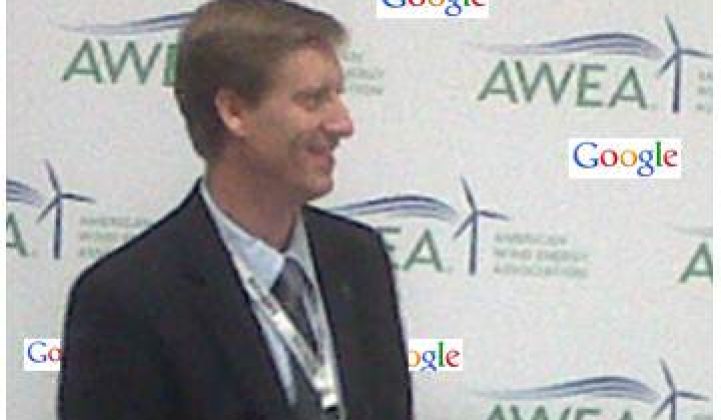Google announced yet another big wind buy, this one in California’s Tehachapi Mountains. The company paid $55 million for a piece of the 102-megawatt Alta IV wind farm built by renewables developer Terra-Gen Poweras part of its multi-phase 1,550-megawatt Alta Wind Center (AWC).
Five phases and 720 megawatts of the AWC are operational. All the AWC-generated electricity has already been sold to Southern California Edison (SCE). It will be delivered to the power-hungry Los Angeles region 100 miles to the southwest via SCE’s 4,500-megawatt capacity Tehachapi Renewable Transmission Project (TRTP).
Spurred by California’s increasingly demanding renewables standards, SCE’s Tehachapi Mountains substation, capable of carrying all of the AWC generation, has already been completed. Further phases of TRTP will accommodate massive further expansion of renewable capacity (solar, wind and geothermal) anticipated in the Mojave-Tehachapi area as the state prepares to obtain a third of its power from renewables by 2020.
Rick Needham, Google’s Director of Green Business Operations and Strategy, took time during Windpower 2011 to talk about how the company’s most recent wind acquisition may further shake up the renewables landscape, how Google got interested in renewables, and how the search behemoth is executing its effort to make electricity generated with renewable energy (RE) a lower cost commodity than (<) electricity generated with coal (C).
“Google has always had, from its beginning, an interest in clean energy and a clean energy future. It comes from the founders,” Needham said of the roots of Google’s RE<C ambitions.
Initially, Google was confronted with the question of why an internet search company was interested in renewable energy. “The answer is actually pretty simple,” Needham said. “Like other companies, energy drives our business. We want that energy to be as clean as possible.”
The next question was what to do to make RE<C. The company’s first high-profile renewables venture was the construction of what at the time was the biggest corporate headquarters rooftop solar array in the nation. From building it, Google learned two lessons.
The first lesson was that renewables are a sound investment. “When we first ran the calculations, it had about a seven-year payback,” Needham said. “Some companies might view that payback period as too long. We didn’t.”
The second lesson came later. “Other corporations built other systems and we think that’s fine. We think people should take a look at this. It makes a lot of business sense.“ And, Google noticed, their high-profile investment had accelerated the deployment of renewable energy.
The lessons echoed in the way Needham talked about Google’s purchases of wind in the last year and its recent AWC purchase, a deal made through an innovative and uncommon (for wind) leveraged lease.
“We have a commitment to try and find paths to a clean energy future, but a fundamental belief we have is that things involving clean energy are good business opportunities,” Needham said. “This is something we’ve looked at on every project: Do they make business sense?”
In addition, he said, the Google renewables teams ask, “Are these projects that we’re working on a path to greater deployment of renewable energy? Do they serve as models for what other companies might be able to do? Are they of the scale that might attract attention and maybe allow other companies to do it and to make their own business case?”
In the last year, Google has signed PPAs with two wind farms in the Midwest to supply 215 megawatts of wind generated electricity to the company’s datacenters in the region. It also bought into the 845-megawatt Shepherd’s Flat wind project in Oregon, which will be the biggest U.S. onshore wind farm. And it joined a consortium preparing to build a 6,000-megawatt capacity transmission backbone for Atlantic coast offshore wind.
“Others can do it, too,” Needham said. “We’ve spent time and effort and have found ways to source what we consider economic renewable energy that provides us long term price hedges. Others can do the same.” And, Needham added, “We view that as a good outcome and something that gets us to more of a clean energy future.”
The leveraged lease Google and partner Citi used to buy Alta IV allows them to buy the project and lease it back to Terra-Gen to operate. “It’s a different kind of a structure,” Needham explained, one that is designed to take advantage of the investment tax credit ( ITC) only recently made available to investors in wind as an alternative to the traditional production tax credit (PTC) investment structure.
“It allows you to have more flexibility on when the capital comes in,” Needham said. It also allows for the use of a 30-percent-of-investment-cost tax credit immediately instead of taking production-based tax credits over the life of the project. “We think there are some benefits. We think there may be other investors, [for whom] with this kind of a structure, [investment] can make more sense.”
Efforts at energy efficiency and achieving the RE<C goal run “throughout our organization and throughout different parts of our organization,” Needham said. The clean energy ethic is “embedded” in Google. “Sustainability is a part of our culture that runs through our entire organization from top to bottom. There’s certainly a strong intention and commitment from the very top,” he said. “And from the bottom up, there’s a lot of passion and excitement. ”



